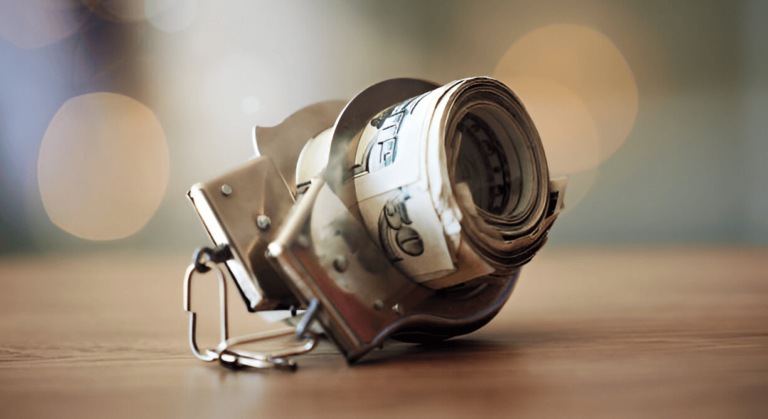
Temporary Assistance for Needy Families (TANF) remains a cornerstone of U.S. support for low-income families with children, providing cash assistance, job training, and other services to foster self-sufficiency. Established in 1996 under the Personal Responsibility and Work Opportunity Reconciliation Act (PRWORA), TANF replaced the Aid to Families with Dependent Children (AFDC) program, shifting from an entitlement model to a flexible block grant system. In fiscal year 2025, the federal block grant totals $16.5 billion—unchanged since 1996, despite inflation eroding its value by over 40%. States must match at least 40% of this with their own funds (maintenance of effort, or MOE), totaling about $15 billion in state spending annually.
This updated guide (November 25, 2025) draws from official sources like the U.S. Department of Health and Human Services (HHS) and the Center on Budget and Policy Priorities (CBPP). It covers TANF’s history, purposes, state variations, eligibility, benefits, application steps, and differences from programs like SNAP. With funding extended through September 30, 2025, via the Full-Year Continuing Appropriations and Extensions Act (P.L. 119-4), now is the time to explore if TANF can help your family.
The History and Evolution of TANF: From AFDC to Modern Welfare Reform
TANF’s roots trace to the Social Security Act of 1935, which created AFDC to aid single mothers and children amid the Great Depression. By the 1990s, AFDC served over 5 million families but faced criticism for fostering dependency, with caseloads peaking at 5.1 million in 1994.
PRWORA, signed by President Bill Clinton, ended AFDC on July 1, 1997, launching TANF as a block grant to promote work and family stability. Key shifts included:
- Time limits: A 60-month federal lifetime cap on benefits.
- Work mandates: States must engage 50% of families in work activities.
- State flexibility: Funds for cash aid, child care, or even scholarships, rather than just entitlements.
Since 2005 (Deficit Reduction Act), TANF has relied on short-term extensions, with no full reauthorization. The 2023 Fiscal Responsibility Act introduced pilots for alternative performance measures, but 2025 saw changes: Five states (California, Kentucky, Maine, Minnesota, Ohio) selected in 2024 had participation ended in March under the Trump Administration, with new applications solicited. Amid economic pressures, states like California increased grants by 6.3% for inflation, while others like Kentucky and South Dakota cut benefits by up to 35%.
Today, TANF serves about 1 million families—down 75% from AFDC peaks—focusing on prevention (e.g., child welfare supports) over long-term aid. Critics note stagnant funding limits reach, with benefits at just 21% of poverty in some states.
What Is the Purpose of TANF? Four Statutory Goals in 2025
PRWORA outlined four core purposes, unchanged in 2025:
- Assist needy families: Ensure children are cared for in their homes.
- Promote work and reduce dependency: Through job training and employment services.
- Prevent out-of-wedlock pregnancies: Via education and support.
- Encourage two-parent families: Supporting marriage and family formation.
These goals guide spending, but states’ flexibility means only 25% of funds go to basic cash aid nationwide, with the rest for child care (25%), work programs (15%), and child welfare (20%). Recent HHS guidance emphasizes using TANF to prevent child welfare involvement, like emergency housing aid.
How Does TANF Work Across All 50 States? Flexibility and Variations
All states, D.C., and territories receive TANF block grants based on 1990s AFDC spending, totaling $16.5 billion federally plus $15 billion in MOE. States design programs (e.g., California’s CalWORKs, Texas’s Choices) to meet local needs, funding:
- Monthly cash for basics (rent, utilities).
- Child care subsidies for working parents.
- Job training and transportation.
- Housing or pre-K programs.
Flexibility allows innovations like Maine’s Parents as Scholars (TANF-funded college aid) or Texas’s two-generation pilots (parent-child education). However, 14 states spend <10% on cash aid, diverting funds to budgets unrelated to TANF goals. In FY2023, total spending hit $31.3 billion, but caseloads remain low (1.1 million families).
Who Is Eligible for TANF Benefits in 2025? Federal and State Rules
Eligibility blends federal baselines with state specifics—always check your state’s site. Common requirements:
- Residency: Live in the applying state/tribal area.
- Family composition: Minor child(ren) under 18 (or 19 if in school); pregnant women in some states.
- Income/resources: Below state limits (e.g., gross income <130% FPL; assets <$2,000–$3,000, excluding home/car).
- Citizenship: U.S. citizen or qualified immigrant (5-year wait for many).
- Cooperation: Assign child support rights; job search for unemployed applicants in 16 states.
Income limits for a family of 3 (2025 examples): California ($1,834/month), Texas ($488 initial/$1,198 ongoing). Exemptions from work: Disabled, elderly caregivers, domestic violence survivors.
2025 TANF Maximum Monthly Benefits by State (Family of 3, No Income)
Benefits vary widely, averaging $545/month but as low as $170 in Mississippi (10% FPL). Updated for 2025 (CBPP/HHS data):
| State | Max Benefit (Family of 3) | % of Federal Poverty Level (FPL) |
|---|---|---|
| Alaska | $923 | 53% |
| New Hampshire | $1,151 | 66% |
| Vermont | $785 | 48% |
| California | $925 | 53% |
| New York | $789 (NYC) | 45% |
| Texas | $318 | 18% |
| Florida | $303 | 17% |
| Mississippi | $170 | 10% |
| Alabama | $215 | 13% |
(Full 50-state table available via HHS; download PDF for sortable view.) Benefits cover ~30% of needs in median states, far below fair market rent.
TANF Work Requirements and Time Limits in 2025
Work Participation Rates (WPR): States must engage 50% of families (or 90% in high-unemployment areas) in 30 hours/week (single parents) or 35 hours (two-parent) activities like jobs, training, or education (up to 12 months vocational). Pilots test alternatives; new 2025 apps focus on employment outcomes.
Time Limits: Federal 60-month lifetime cap; states can extend via MOE (e.g., NY, CA). 21 states have shorter limits (e.g., Texas: 12–36 months); Michigan extended to 60 in April 2025. Child-only cases often exempt.
How to Apply for TANF in 2025: Step-by-Step Guide
- Check eligibility: Use your state’s portal (e.g., MyBenefits.CalWIN.org) or Benefits.gov.
- Gather documents: ID, income proof, SSN, residency, child birth certificates.
- Submit application: Online (most states), mail, or in-person; screeners available via 211.
- Interview: Within 7–30 days; discuss needs and work plan.
- Await decision: 30 days max; appeals if denied.
- Enroll in services: Orientation for WorkFirst/job training.
Emergency diversion payments (e.g., $1,500 in Arkansas) available for crises. Track via EBT apps like Propel.
Is TANF the Same as SNAP (Food Stamps)? Key Differences in 2025
No—both aid low-income households, but:
| Aspect | TANF | SNAP (Food Stamps) |
|---|---|---|
| Benefits | Cash for any needs (EBT) | Food-only (EBT) |
| Eligibility | Families with kids; work/time limits | Broader; no kids required |
| Duration | 60-month cap | No time limit |
| Work Rules | Strict (30+ hrs/week) | ABAWDs: 20 hrs (age 18–54) |
| Avg. Amount | $545/month (family of 3) | $291/person (2025) |
Qualify for both? Yes—apply jointly in most states. 2025 SNAP changes expand ABAWD age to 54.
New Changes in 2025: What’s Happening Now?
- Funding: Extended to Sept. 30; pilots relaunched for work alternatives.
- Guidance: HHS emphasizes TANF for child welfare prevention (e.g., housing subsidies).
- State Actions: CA +6.3% grants; KY/SD cuts (10–35%); MI extends time limits.
- Rule Withdrawal: Proposed “Strengthening TANF” rule pulled Jan. 14.
Advocates push for inflation adjustments and equity.
Frequently Asked Questions (FAQs) – TANF 2025
Q: How much does TANF provide? A: Varies by state/family size; e.g., $400–$600/month for a family of 3 in median states (20–50% FPL).
Q: Can I get TANF if employed? A: Yes, if income qualifies; many states disregard 50% of earnings.
Q: What if I miss work requirements? A: Gradual sanctions; full loss after repeated noncompliance, per state policy.
Q: Is TANF the same as SNAP? A: No—cash vs. food; dual eligibility common.
Q: What about immigrants? A: 5-year wait for many; child citizens eligible regardless.
Conclusion: TANF in 2025 – Help Exists, But the System Is Broken
In 2025, TANF is still the only federal program that puts flexible cash straight into the hands of parents raising kids in poverty. For the families who get it, that money prevents eviction, buys school supplies, and funds job training. But with benefits as low as $170 a month in some states and the federal block grant frozen for almost 30 years, TANF reaches fewer than 1 in 4 poor children.
If you’re struggling, don’t assume you’re ineligible—many working parents still qualify, and emergency payments are available fast. Apply today through your state portal or call 211.
America can and must do better: restore TANF’s purchasing power, refocus funds on cash aid, and give every child in poverty a real safety net.
Your next step starts now: check your state’s TANF site at acf.hhs.gov/ofa/programs/tanf or dial 211.




